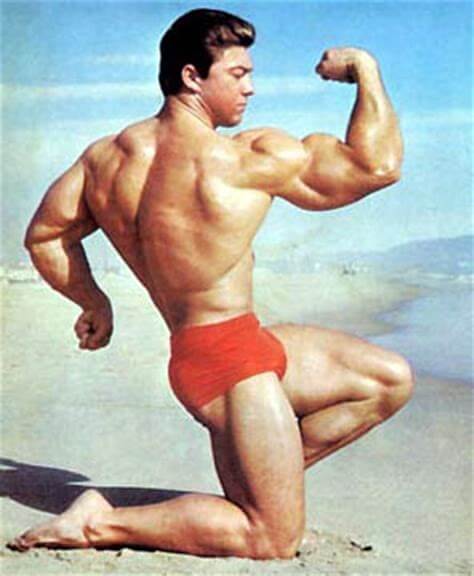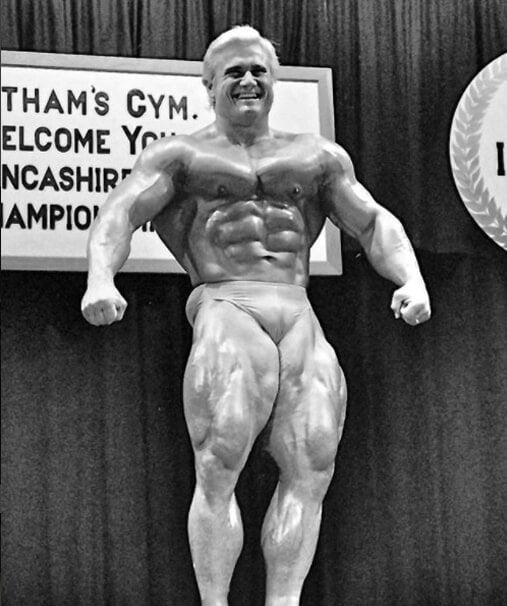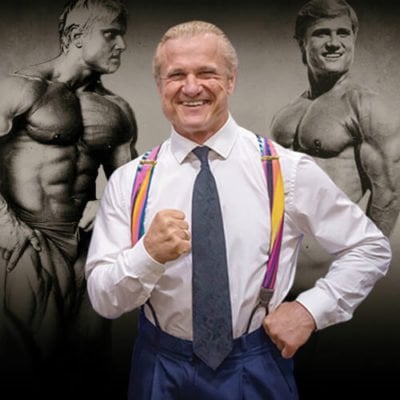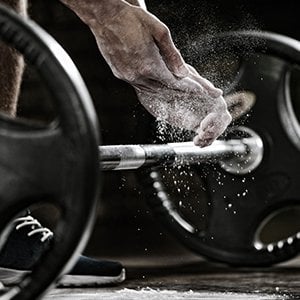
Old School Bodybuilding Diet
The Golden Eagle came from an era where supplements were scarce. Here’s how he and his legendary peers got the nutrition they needed for epic gains.
Tom Platz’ Body Building Diet
When Tom Platz moved out to California in 1978, he was already a rising star in the sport but was far from being fully educated on all things bodybuilding, especially concerning matters of nutrition.
Platz immediately became a regular at the Mecca (Gold’s Gym, Venice), and began his immersion into perfecting the old school bodybuilding diet and training techniques that would make him a legend.
Platz, a thinking man’s bodybuilder, approached the science of his sport with analytic rigor without dispensing of the keen intuition that helped guide him to the top echelon of the IFBB. There wasn’t a lot of nutrition science to speak of back in his bodybuilding heyday. You could count the manufacturers of bodybuilding supplements on one hand.

“Back then there was Bob Hoffman, Dan Lurie, and Joe Weider,” recalls Platz. “We didn’t have sports supplements, not like today.”
Protein shakes were scarce and awful tasting. Fat burners didn’t exist. Neither did pre-workout supplements. In the Golden Era, your pre-workout was a cup of coffee. As bodybuilders, we were always searching for a muscle-building edge. When visiting health food stores, the pickings were slim and sometimes odd.
“We would get brewers yeast, desiccated liver, other food extracts. There wasn’t engineered foods,” he says. “There were One a Day Vitamins, things like that. But that was it.”
Platz remembers taking up to 75 desiccated liver pills a day. Liver is an organ meat, and a potent source of nutrition. Three ounces of liver contains 22 g of protein at relatively low fat. Liver is also extremely high in vitamin B12 and iron. Some of Platz’s fellow bodybuilders downed liver pills by the hundreds, but this was normal for the old school bodybuilding diet.
But make no mistake: Whole food was the game back then. And Platz still believes that’s the way to go.
“Food should be your main source of nutrients. Supplements are supposed to supplement your food intake. That’s it,” he states.
How you choose your whole food is key, according to Platz. He believes you should avoid processed meats, get as close to the original source as you can. He calls it “farm-to-mouth” food.
EATING CLOSE TO THE BONE

Huge portions of beef, eggs, and chicken were on the menu in the Golden Era.
“I remember working out with Sergio Oliva in the ‘70s,” remembers Platz. He’d lay the out under the sun and every hour he’d eat a pound of steak,” he says with a laugh.
The Golden Era approach to meat consumption deviates a bit from today’s bodybuilding norm. From the 1990s on, bodybuilders routinely ordered chicken without the skin. Not the guys in the Golden Era.
“We ate the skin. We considered the skin immensely important. I still believe in eating the skin. It’s funny how we all migrated to chicken breast, skinless and boneless,” he says. “What’s popular isn’t always right, and what’s right isn’t always popular.”
Tom Platz believes that the breasts aren’t the best cut of the bird for muscle-building and health. He says that back in the Middle Ages, the ruling class would hoard the meat closest to the bone and toss the breast meat to the peasants. “I believe meats closest to the bone have more nutrition. The turkey legs, chicken legs, oxtail stew, and rib-eye. Whatever is nearest the bone is more substantial.”
One reason Platz began experimenting with meat close to the bone was a simple one: it was less expensive. In his early days, this type of meat was cheaper than chicken breasts.
“I ate a lot of chicken wings, but I prefer a chicken thigh and leg with the skin on it. Put it in a soup base long enough to where the meat just rolls off the bone with the skin still attached.”
BREAKFAST ALL DAY

It worked for him. And he didn’t stop at the bone. He began digging a little deeper.
“You have to nibble on the meat close to the bone, and hold the bone in your hands,” he says. “Occasionally, what I’ll do is I’ll nibble on the bone marrow, the very end of the bone. I don’t eat the whole bone, of course, just the soft round part on the bone.”
Platz says the only processed meat he regularly eats is bacon. “I’m a big practitioner of bacon,” he says.
Bacon is a breakfast staple, and Platz swears by other breakfast foods: eggs and butter. “I remember back in the old days eating a dozen eggs for breakfast. That was in the ‘70s. And we ate the whole egg, yolks and whites. I believe the whole egg is more nutritious.”
Again, the quality of the foods matter—farm-to-mouth foods that haven’t been processed or subjected to factory farm production. “I would go to a farmer’s market, or go out of my way to get eggs directly from a farm,” he says. “I would buy as little as possible from the supermarket.”
Platz believes the right foods can act as an anti-inflammatory. He credits eating skin with helping his skin, and butter with helping keep his joints limber.
“I’m a big stickler for butter. I believe butter really assists my joints and skin. From what I understand, butter is not a broken down by the liver. It goes immediately into the bloodstream. Whenever I speak with someone who’s having joint issues, I usually talk to them about butter.”
TAKE IT SLOW
Platz believes that many people today don’t take their time with meals—not making them, eating them. He questions the wisdom of eating several meals per day.
“Most guys nowadays try to down as many meals as possible,” he explains. “They eat six, seven times a day. They’re always thinking about their next meal. They don’t chew their food properly. Digestion is important, and digestion begins in the mouth by chewing your food slowly.”

Back in the Golden Era, he and other bodybuilders would gravitate toward fermented foods to help them digest their meals. Fermented foods include sauerkraut, kimchi, yogurt, cottage cheese, etc. Platz says probiotics are important, and the Golden Era greats understood the necessity of a healthy gut.
“If I don’t have a meal with sauerkraut or some kind of fermented onions or vegetables, then I don’t feel right. I try to have at least two meals a day with pickles or fermented beets.”
CARBS & FATS: HIGH OR LOW?
Bodybuilders in the ‘60s and ‘70s didn’t give a lot of credence to popular nutrition trends. They didn’t fear dietary fat like the general public. They also knew the power of manipulating carbs. That’s something Platz learned while competing.

“In the ‘70s, low carbs was the way to go,” he remembers. “Guys like Larry Scott, Bill Pearl, and Reg Park ate a greater variety of food, including dairy products and very little sugar. I was guest-posing once in Florida and Larry Scott was drinking raw cream. On the West Coast, they were eating low carbs, low sugar, high fat. A lot of fish, meat, eggs, and some vegetables. That approach worked.”
It didn’t work forever. Platz decided to experiment with carbs, and he reaped tremendous benefits. “I decided to go from low carbs to high carbs for the 1980 Mr. Olympia in Sydney, Australia. I figured out my caloric intake should be 300 grams of carbs a day. My condition was on point. Everything was really perfect. That was the biggest and probably the best condition of my entire life. It was like magical solution for me.”
He reinforced the importance of alternating dietary strategies. “My body got used to high carbs and it was more difficult to achieve the same kind of condition. I should have switched metabolisms on a more regular basis.”
TAKE YOUR TIME, LEARN YOUR CRAFT

Platz will turn 63 years old in June. He’s still healthy and fit. He eats today using the same basic nutritional principles as he did in his bodybuilding prime—liver, fermented foods, butter, and soups made with meat close to the bone, all part of the old school bodybuilding diet.
“I’m not as flexible as I was in my thirties, but I’m pretty close,” he says. “I still recover fast and feel great.”
He says the biggest mistake bodybuilding beginners make is trying to do too much at once, instead of taking the time to understand nutrition. “Too many guys use a shotgun approach. I think that’s a mistake because you don’t know what works. A beginner should learn about food and understand nutrition instead of wanting to gain too much too soon. Patience is not something I see a lot of nowadays.”
Understanding your body, knowing the quality and nutritional content of foods you eat is the key. And you should enjoy yourself.
Says Platz: “Bodybuilding is not about deprivation and punishment. It’s about abundance and prosperity. You can have it all and eat all the things you want. You don’t have to starve and you don’t have to be excessive.”
What do you think about Tom Platz’s nutritional advice? How do you plan your bodybuilding menu?











